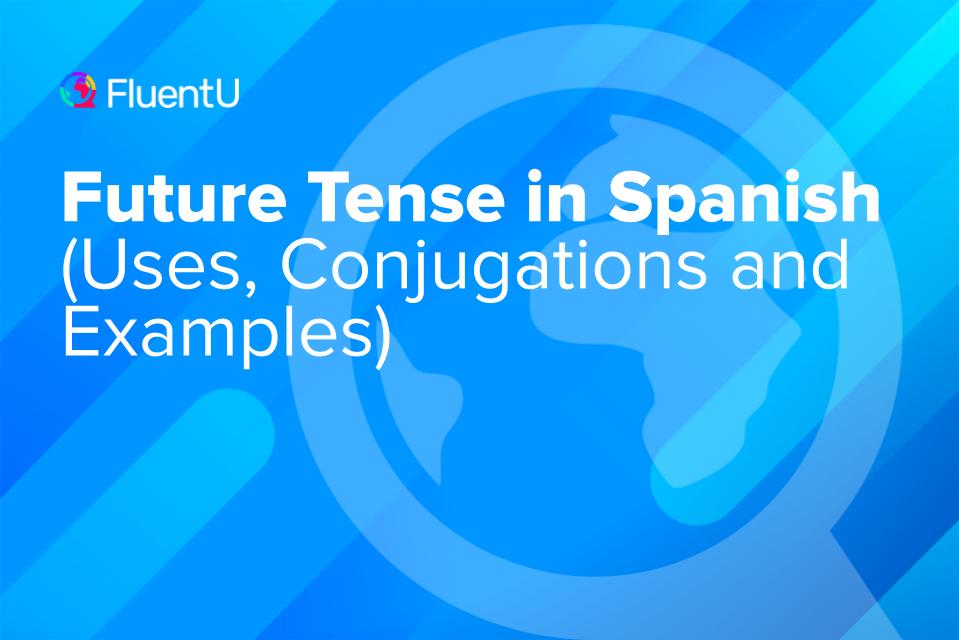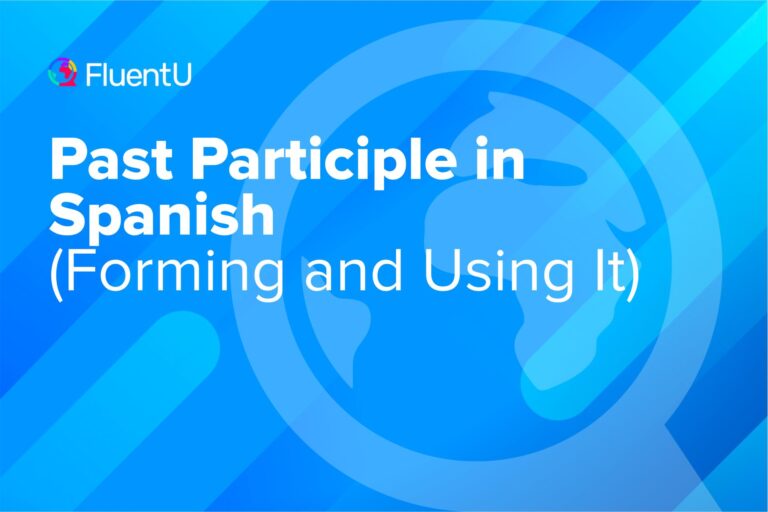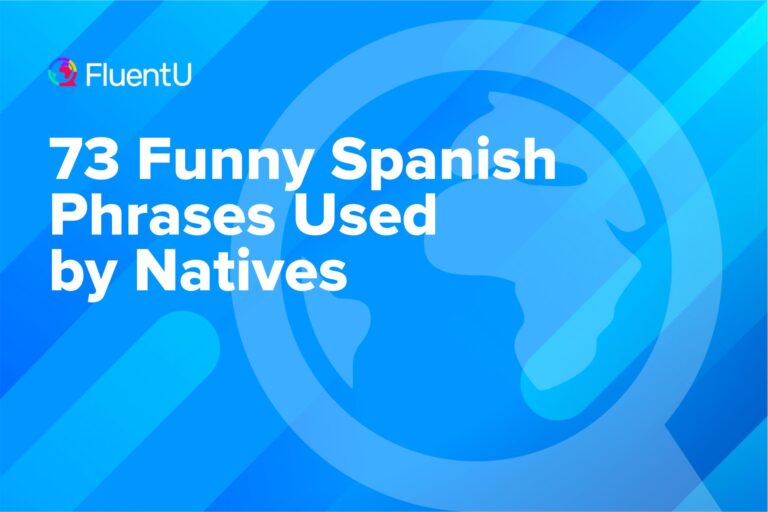Future Tense in Spanish (Uses, Conjugations and Examples)

The simple future tense in Spanish is formed by taking the infinitive form of the verb and adding one of the following endings to it: -é, -ás, -á, -emos, -éis and -án (which ending you use depends on the subject.) However, that’s not the only way you can express the future!
Keep reading for everything you need to know about the future tense in Spanish—conjugations, when to use it, irregular verbs and more. Plus, you’ll find different ways to express the future in addition to the above method.
Download: This blog post is available as a convenient and portable PDF that you can take anywhere. Click here to get a copy. (Download)
Before we get started, if you’re pressed for time, here is your cheat sheet to the key ways of expressing the future tense in Spanish:
| Type of future tense | How to form | Usage | Example sentence |
|---|---|---|---|
| Simple future | verb in future form | To make predictions about the future, assumptions about the present or to give commands. | El próximo año terminaré mis estudios.
Next year, I will finish my studies. |
| Near future | ir + a + verb in infinitive form | To express actions that are going to be completed in the near future. | Voy a terminar mis deberes antes de la cena.
I'm going to finish my homework before dinner. |
| Present tense | verb in present form | To express future actions with present tense verbs, typically in contexts like schedules or timetables. | El tren sale a las 7 de la mañana.
The train leaves at 7 in the morning. |
| Future perfect | haber in future form + past participle | To express actions that will have been completed before a certain point in the future. | Para mañana ya habré terminado el libro.
By tomorrow I will have finished the book. |
Let’s take a look at how these different forms work in a little more detail.
The Simple Future Tense in Spanish
The future tense in Spanish is much like “will” in English. We use it to make predictions about the future, assumptions or guesses about the present and give commands.
For example:
Lloverá mañana. (It will rain tomorrow.)
Estará en la cama. (He’ll be in bed.)
¡Callarás! (You will/shall be quiet!)
Most importantly, we also use it to talk about the distant future. So if you want to talk about next year’s vacation, you would say:
El año que viene iremos a Nueva York (Next year we’re going to New York)
Simple Future Tense Conjugation
When we talk about “the future form” in Spanish, we refer to the future simple tense.
To form the future tense in Spanish, we need to take the infinitive form of the verb and add these endings to it: -é, -ás, -á, -emos, -éis and -án. Each ending corresponds to a different subject, and are the same whether you’re using an –ar, –er, or –ir verb.
Note that there is an accent on the first letter of every ending, except the “we” form –emos.
| Subject | Endings | Example Using Hablar |
|---|---|---|
| Yo | -é | Hablaré |
| Tú | -ás | Hablarás |
| Él/Ella/Usted | -á | Hablará |
| Nosotros | -emos | Hablaremos |
| Vosotros | -éis | Hablaréis |
| Ellos/Ellas/Ustedes | -án | Hablarán |
Irregular Verbs in Simple Future Tense
Some verbs are irregular and don’t follow exactly the same pattern as above: though they use the same endings as the regular verbs, the stems will change.
Here are some common irregular verbs that are worth learning:
| Infinitive Verb | Irregular Future Form |
|---|---|
| Tener | Tendré |
| Poner | Pondré |
| Decir | Diré |
| Querer | Querré |
| Hacer | Haré |
| Venir | Vendré |
| Saber | Sabré |
Other Uses of the Simple Future Tense
“If” statements. The simple future tense is commonly used in “if” statements. For example:
Si tengo dinero suficiente, iré de compras contigo. — If I have enough money, I will go shopping with you.
Si tú te vas, el dolor me comerá. — If you leave, the pain will consume (lit. eat) me. (This is a line from an Enrique Iglesias song!)
Talking about the past and present. Believe it or not, you can sometimes use the future tense to talk about the past and present! More specifically, it’s used to express possibility and probability about an action that’s occurring right now. For example:
¿Adónde habrá ido Mary? — Where could Mary have gone/Where has Mary gone?
Ella estará estudiando ahora. — She is probably studying right now/She will be studying right now.
Reported speech. You’ll frequently hear the Spanish future tense in reported speech—like news clips, news articles, newspapers and more. For example:
Serán las cinco y media cuando llegue el presidente. — It will be 5:30 when the president arrives.
Habrán sido 100 años desde la muerte del guerrero. — It will have been 100 years since the death of the warrior.
More Ways to Talk About the Future in Spanish
Ir + A + Infinitive Future Form
Just like in English, we use the phrase “going to” when talking about things we have already planned that are typically in the near future.
Vamos a ir de compras. (We’re going shopping.)
Voy a viajar a Guatemala. (I’m going to travel to Guatemala.)
So how do we make the Spanish equivalent of “going to?”
It takes a simple formula:
Here’s an example of the formula in action, using hablar (to talk) as an example:
| Subject | Ir Conjugations | Ir + A + Infinitive |
|---|---|---|
| Yo | Voy | Voy a hablar |
| Tú | Vas | Vas a hablar |
| Él/Ella/Usted | Va | Va a hablar |
| Nosotros | Vamos | Vamos a hablar |
| Vosotros | Vais | Vais a hablar |
| Ellos/Ellas/Ustedes | Van | Van a hablar |
As long as you use the ir + a, you can use this with the infinitive of any verb.
Using Present Tense
You may not realize it, but we use the present tense to talk about the future all the time in English. Think about what you would say if I asked what time you were leaving the house tomorrow.
You would likely say “I’m leaving at eight” instead of “I’m going to leave at eight” or “I will leave at eight.”
It’s similar in Spanish, though they tend to use the simple present tense instead of the present continuous tense that we usually use in English.
Salgo a las ocho. (I’m leaving at eight.)
Use the present tense to talk about the future in Spanish anytime you would in English, usually when someone asks you in the present about something you’re planning to do.
Future Perfect
The future perfect tense is used when you want to talk about something that hasn’t happened yet but will.
For this, you need to use the future indicative form of haber plus the past participle.
You can create the past participle of a verb by dropping the –ar, -er or -ir ending and adding -ado for ar verbs or -ido for er and ir verbs.
Here is what that would look like using hablar as an example:
| Subject | Future Perfect |
|---|---|
| Yo | Habré hablado |
| Tú | Habrás hablado |
| Él/Ella/Usted | Habrá hablado |
| Nosotros | Habremos hablado |
| Vosotros | Habréis hablado |
| Ellos/Ellas/Ustedes | Habrán hablado |
Here are some examples of the future perfect in use:
Habremos terminado antes de que llegue. (We will have finished before he arrives.)
Habré ido a la universidad. (I will have gone to college.)
Useful Spanish Future Vocabulary
Here are some words you should know if you want to talk about future plans:
| Spanish | English |
|---|---|
| Mañana | Tomorrow |
| Pasado mañana | The day after tomorrow |
| La semana que viene | Next week |
| El fin de semana que viene | Next weekend |
| El mes que viene | Next month |
| El año que viene | Next year |
| Nunca | Never |
| Un día | One day |
How to Practice the Spanish Future Tense
There are plenty of resources out there to help you practice Spanish grammar, including the future tenses. There are exercises on the web as well as Spanish grammar apps to help you learn and review.
But the best way to drill these into your mind is to see how native speakers use them: Maybe you can find a Spanish-language TV series about time travel, or just find a copy of The Time Machine in Spanish. Whatever you do, watch out for how these verbs are conjugated!
You could also use an online immersion program. FluentU, for example, teaches Spanish through short videos about many different topics (covering the past, present, and yes, future).
FluentU takes authentic videos—like music videos, movie trailers, news and inspiring talks—and turns them into personalized language learning lessons.
You can try FluentU for free for 2 weeks. Check out the website or download the iOS app or Android app.
P.S. If you decide to sign up now, you can take advantage of our current sale!

The more resources you use, the more grammar you’ll be exposed to. The future tense comes up in tons of conversations and hearing it used in context will help you remember it better.
There you have it—the full rundown of the future tense in Spanish, from conjugations to irregularities.
We hope that la próxima vez (the next time) you want to talk about the futuro (future), you’ll have no problems at all.
¡Hasta la próxima! (See you next time!)
Download: This blog post is available as a convenient and portable PDF that you can take anywhere. Click here to get a copy. (Download)
And One More Thing…
If you've made it this far that means you probably enjoy learning Spanish with engaging material and will then love FluentU.
Other sites use scripted content. FluentU uses a natural approach that helps you ease into the Spanish language and culture over time. You’ll learn Spanish as it’s actually spoken by real people.
FluentU has a wide variety of videos, as you can see here:

FluentU brings native videos within reach with interactive transcripts. You can tap on any word to look it up instantly. Every definition has examples that have been written to help you understand how the word is used. If you see an interesting word you don’t know, you can add it to a vocab list.

Review a complete interactive transcript under the Dialogue tab, and find words and phrases listed under Vocab.

Learn all the vocabulary in any video with FluentU’s robust learning engine. Swipe left or right to see more examples of the word you’re on.

The best part is that FluentU keeps track of the vocabulary that you’re learning, and gives you extra practice with difficult words. It'll even remind you when it’s time to review what you’ve learned. Every learner has a truly personalized experience, even if they’re learning with the same video.
Start using the FluentU website on your computer or tablet or, better yet, download the FluentU app from the iTunes or Google Play store. Click here to take advantage of our current sale! (Expires at the end of this month.)







